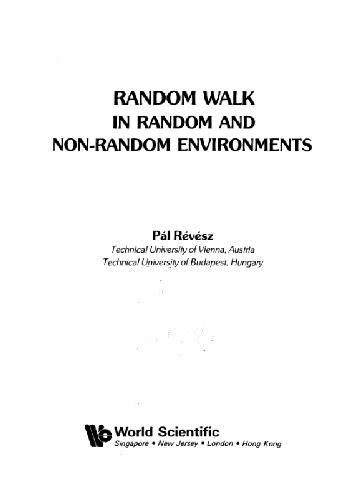Dennis A. Attwood, Joseph M. Deeb, Mary E. Danz-Reece9780750677042, 0-7506-7704-X
Table of contents :
Contents
……Page 6
Preface
……Page 14
Acknowledgements
……Page 16
Disclaimer
……Page 18
1.1 INTRODUCTION……Page 20
1.2.2 Chapter 3. Physical Factors……Page 24
1.2.5 Chapter 6. Workplace Design……Page 25
1.2.6 Chapter 7. Job Factors……Page 26
1.2.7 Chapter 8. Information Processing……Page 27
1.3.1 Develop or Adopt Standards……Page 29
1.3.2 Management Awareness Sessions……Page 32
1.3.3 Educate Site Personnel……Page 33
1.3.4 Identify Issues……Page 34
1.3.5 Setting Priorities……Page 37
1.3.7 Conduct Cost-Benefit Analysis……Page 39
The ‘
DOT’ Process for Prioritizing Issues……Page 40
1.3.9 Develop and Implement Strategy for Top Issue……Page 42
1.3.11 Improve Management Systems……Page 44
2.1 INTRODUCTION……Page 48
2.2 SENSORY AND COGNITIVE CAPABILITIES……Page 49
2.2.1 Visual Sense……Page 50
2.2.2 Auditory Sense……Page 57
2.2.3 Cognitive Capabilities……Page 58
2.2.4 Summary of Information Processing……Page 66
2.3 PHYSICAL CAPABILITIES……Page 67
2.3.1 Muscular Strength and Endurance……Page 68
2.3.2 Anthropometry: Body Size……Page 71
2.4 CASE STUDY……Page 76
2.4.1 Method……Page 77
2.4.2 Data Collected……Page 78
2.4.3 Conclusion……Page 79
3 Physical Factors……Page 84
3.1 MUSCULOSKELETAL DISORDERS……Page 85
3.2.1 Manual Handling Risk Factors……Page 87
3.2.2 Methods for Evaluating Manual Handling Tasks……Page 91
3.3.1 Risk Factors……Page 100
3.3.3 Hand Tools……Page 102
3.4 BEHAVIOR……Page 104
3.5 ERGONOMICS PROGRAM……Page 107
3.5.1 Planning an Ergonomics Program……Page 108
3.5.2 Risk Assessment Process……Page 110
3.5.3 Solutions……Page 112
3.5.4 Evaluating the Ergonomics Program……Page 113
3.6 CASE STUDY……Page 114
APPENDIX……Page 116
3.7 REVIEW QUESTIONS……Page 127
REFERENCES……Page 128
4 Environmental Factors……Page 130
4.2 ILLUMINATION……Page 131
4.2.1 Lighting Quantity……Page 133
4.2.2 Task Factors……Page 134
4.2.3 Age Factors……Page 135
4.2.4 Lighting Quality……Page 136
4.3 TEMPERATURE……Page 140
4.3.1 Effects of Heat on Performance……Page 141
4.3.2 Effects of Cold on Performance……Page 143
4.3.3 Effects of Heat on Health……Page 144
4.3.4 Comfort and Discomfort Zones……Page 147
4.3.5 Work Tolerance in a Hot Environment……Page 148
4.3.6 Recommendations to Improve Working Conditions……Page 150
4.4 NOISE……Page 152
4.4.1 Effects of Noise on Performance……Page 153
4.4.2 Effects of Noise on Health……Page 156
4.4.3 Guidelines to Control Noise……Page 158
4.5 VIBRATION……Page 161
4.5.1 Effects of Vibration on Performance……Page 162
4.5.2 Effects of Vibration on Health……Page 164
4.5.3 Guidelines to Reduce or Control Vibration……Page 165
4.6 CASE STUDY……Page 166
4.6.3 Recommendations……Page 167
4.6.4 Installation of a Pilot Lighting System……Page 169
REVIEW QUESTIONS……Page 170
REFERENCES……Page 171
5.1 HUMAN/SYSTEM INTERFACE……Page 176
5.2 CONTROLS……Page 177
5.2.1 Physical Requirements of Operating Controls……Page 179
5.2.2 Types of Controls……Page 180
5.2.3 Control Labels and Identification……Page 182
5.2.4 Stereotypes……Page 183
5.2.6 Preventing Accidental Operation……Page 184
5.2.7 Valves……Page 185
5.3 VISUAL DISPLAYS……Page 188
5.3.1 Types of Displays……Page 189
5.3.2 Mounting Displays……Page 191
5.4 RELATIONSHIP BETWEEN CONTROLS AND VISUAL DISPLAYS……Page 193
5.5 AUDITORY ALARMS……Page 194
5.6.1 Field Panel Layout……Page 196
5.6.2 Field Panel Labels……Page 200
5.6.3 Improving Field Control Panels……Page 203
5.7 PROCESS CONTROL DISPLAYS……Page 204
5.7.1 Process Control Display Interface……Page 206
5.7.2 Approach for Developing Process Control Displays……Page 214
5.8 CASE STUDY……Page 223
APPENDIX 5-1. CHECKLIST FOR EQUIPMENT DESIGN……Page 225
REFERENCES……Page 228
6 Workplace Design……Page 232
6.1 INTRODUCTION……Page 233
6.2.4 The Workplace Must Be Designed for the User Population……Page 234
6.2.5 Equipment Must Be Physically Accessible……Page 239
6.2.6 Work Must Be Positioned as Best for the Operator……Page 249
6.2.7 Workstations and Seating Must Be Designed According to Accepted Human Factors Standards
……Page 256
6.2.8 Maintenance and Maintainability……Page 272
6.3 ANALYTICAL TECHNIQUES IN WORKPLACE DESIGN……Page 275
6.3.1 Activity Analysis……Page 277
6.3.3 Link Analysis……Page 279
6.4.1 Existing Workstations……Page 281
6.4.2 New Workstations……Page 284
6.5 CASE STUDY……Page 285
6.5.2 Problem Identification……Page 286
6.5.3 Background……Page 287
6.5.4 Data Collection and Analysis……Page 288
6.5.5 Evaluation……Page 291
6.5.6 Recommendations and Redesign……Page 296
REVIEW QUESTIONS……Page 298
REFERENCES……Page 303
7 Job Factors……Page 306
7.2 SHIFT WORK AND WORK SCHEDULES……Page 307
7.2.1 Sleep and Sleep Disorders……Page 308
7.2.2 Effects of Shift Work on Performance……Page 314
7.2.3 Effects of Shift Work on Health……Page 315
7.2.4 Effects of Shift Work on the Psychosocial Life……Page 316
7.2.5 Shift Work Schedule Design……Page 318
7.2.6 Coping Strategies with Shift Work……Page 321
7.2.7 Process for Creating or Changing Shift Schedules……Page 326
7.3.1 Sources and Causes of Stress……Page 327
7.4.1 Task Analysis……Page 329
7.4.2 Critical-Task Identification and Analysis……Page 334
7.5.1 Cognitive Problem-Solving Style (KAI)……Page 341
7.5.2 Drexler-Sibbet High-Performance Team Model……Page 342
7.5.4 Systematic Multilevel Observation of Groups (SYMLOG)……Page 343
7.6.1 Lessons Learned……Page 344
328……Page 347
329……Page 348
330……Page 349
7.7.2 Task Analysis……Page 350
REFERENCES……Page 354
8 Information Processing……Page 358
8.1.1 Introduction……Page 359
8.1.3 Mental Errors……Page 360
8.1.4 Display Errors……Page 365
8.1.6 System Factors That Lead to Error……Page 366
8.2 PLANT SIGNS AND LABELS……Page 369
8.2.1 Equipment Labeling Program……Page 370
8.2.2 Designing Signs and Labels……Page 371
8.2.3 Guidelines for Specific Types of Signs and Labels……Page 376
8.3 PROCEDURES……Page 380
8.3.1 Guidelines for Determining When a Procedure Is Needed……Page 381
8.3.2 Developing Procedures……Page 382
8.3.3 Formatting Written Procedures……Page 383
8.3.4 Determining Why a Procedure Was Not Used……Page 384
8.3.5 Evaluating Written Procedures……Page 385
8.4 TRAINING……Page 386
8.4.1 Developing Training……Page 387
8.4.2 Task Analysis for Training Development……Page 388
8.4.3 Content of a Training Package……Page 389
8.4.5 When to Provide Training……Page 390
8.5 VIGILANCE……Page 391
8.5.2 Control Room Operations……Page 393
8.5.3 Mining Operations……Page 395
8.5.6 Factors Contributing to Vigilance Decrement……Page 396
8.5.7 Operator Workload Analysis……Page 397
8.6.1 Narrative: How to Change a Tire……Page 401
REVIEW QUESTIONS……Page 403
APPENDIX 8-1. Procedures Evaluation Checklist……Page 404
REFERENCES……Page 408
9 The Use of Human Factors in Project Planning, Design, and Execution……Page 412
9.1 INTRODUCTION……Page 413
9.2.1 Management of Major Projects……Page 414
9.2.2 Management of Base Projects……Page 416
9.3.1 Human Factors Tracking Database……Page 417
9.3.2 HF Review: Planning Phase……Page 418
9.3.3 Safety, Health, and Environmental Review……Page 419
9.3.4 Human Factors Training for the Project Team……Page 420
9.3.5 Human Factors in the Hazard and Operability Reviews……Page 423
9.3.6 Procedures……Page 428
9.3.7 Analysis Techniques……Page 429
9.3.8 Quality Assurance/Quality Control Review Process……Page 435
9.3.9 Prestart-up Human Factors Review……Page 444
9.3.10 HF Awareness for Construction Contractors and Company Personnel
……Page 445
9.3.11 Postproject Review……Page 446
REVIEW QUESTIONS……Page 448
REFERENCES……Page 470
Index……Page 472







Reviews
There are no reviews yet.